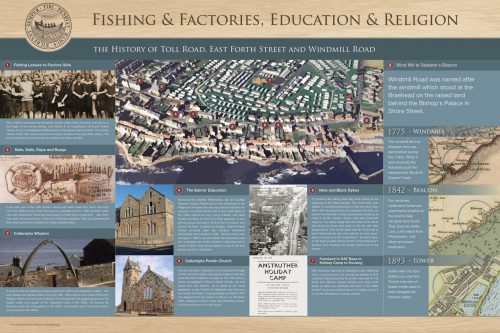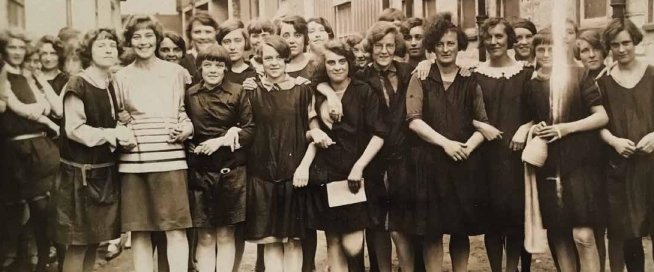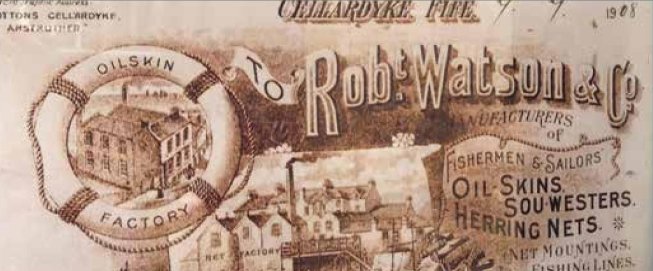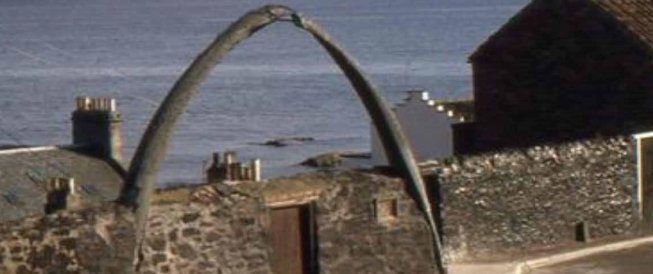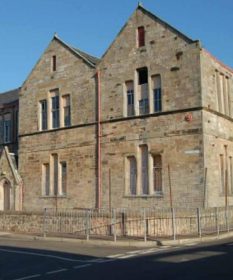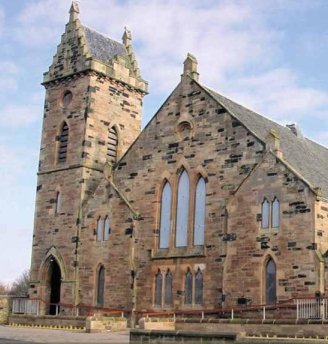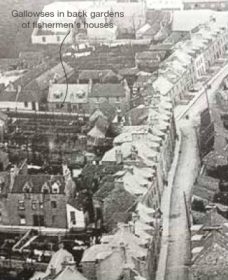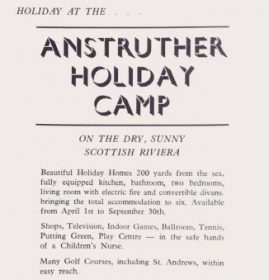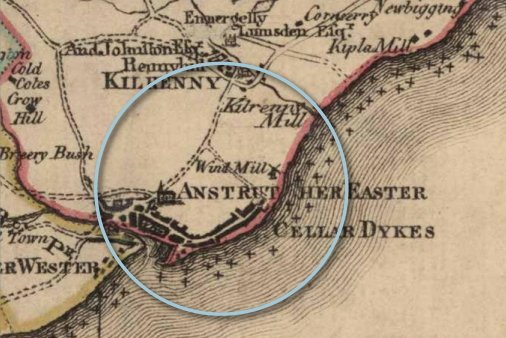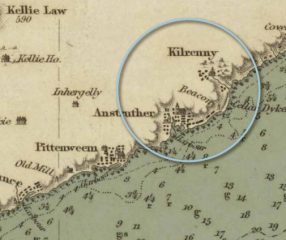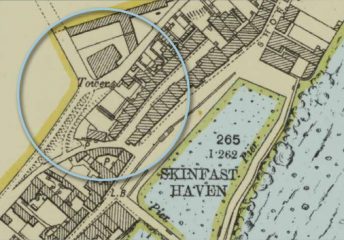Fishing & Factories, Education & Religion
The History of Toll Road, East Forth Street and Windmill Road
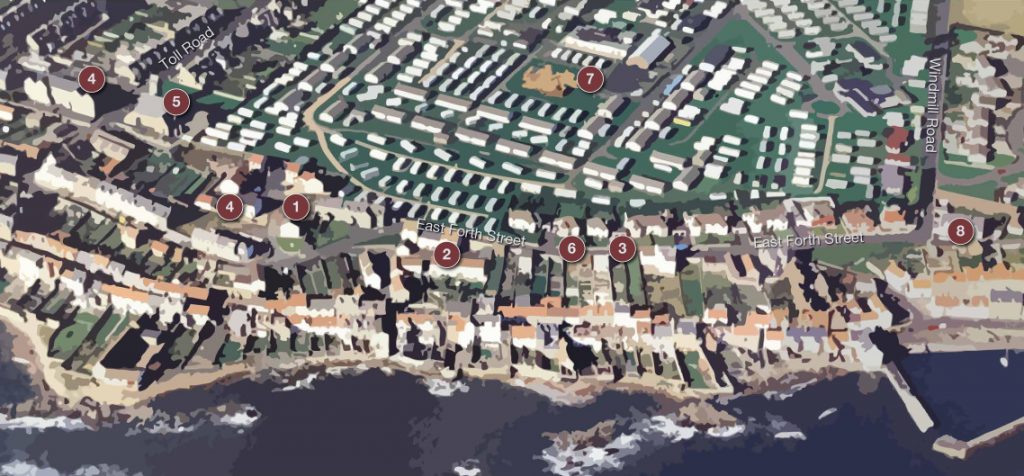
1. Fishing Lassies to Factory Girls
Many oilcloth manufacturing enterprises (locally called oilskin factories) were set up at the height of the herring fishing. John Martin & Co (established 1844) and Robert Watson & Co Ltd (established 1859) traded and flourished until the 1960s.
The Fishing Lassies of the 19th century became the factory workers of the early 20th century. The firms employed many thousands of workers over these decades.
2. Nets, Sails, Rope and Buoys
In the early part of the 19th Century fishing nets were made from hemp and linen. From the 1820s factory-made nets became available and from 1860 onwards cotton
nets were introduced. Fishermen purchased all of their boat’s equipment – nets, lines, rope, sails, buoys and hooks – from local Cellardyke suppliers. They also purchased all their oilskin protective clothing from these establishments.
3. Cellardyke Whalers
A small number of Cellardyke whalers sailed from Leith to the Greenland waters. One such whaler was Captain William Smith (b1780) , Artic explorer and master of the Artic Whalers William and Anne and Caledonia. He brought back the gigantic jawbone of the largest whale ever caught off the Greenland coast in the 1830s. He erected the jawbone at the top of his garden in the 1830s. It dominated East Forth Street until it was removed in the 1980s.
4. The Bairns’ Education
Following the Scottish Reformation, like all Scottish Parishes, Kilrenny Parish School was established in the village and remained the only educational institution for centuries.An Infant School built in East Forth Street in the 1850s catered for very young children, with older children travelling to Kilrenny for their education.
A new primary school was built in 1878 on the Powcausie, now named Toll Road. It catered for all ages. Kilrenny Parish School remained open but numbers diminished dramatically and it closed in 1936. The new school was enlarged in 1896 to accommodate the increasing pupil roll.
It remained the centre of primary education until it closed in 2003, when all youngsters moved to the new primary school in Anstruther.
5. Cellardyke Parish Church
The sea has given Cellardyke its rich historical heritage and for centuries religion has played a deep-rooted part in the life of its inhabitants. As early as the 13th Century, Dykers worshipped in Kilrenny Parish Church, one mile inland from the harbour.
As a result of the rising population, a new Church for Cellardyke was built on a site beside Toll Road. It was dedicated on 6 March 1881 and disjoined from the parish of Kilrenny on 28 March 1883.
Cellardyke Church united with Anstruther Church in 2016 and became St. Ayle Church.
6. Nets and Black Dykes
To preserve the fishing nets they were barked at the beginning of the fishing season. This meant they were dipped in a boiling preservative of oak and birch bark.
After 1840 the preservative was replaced with cutch, an extract from the bark of Indian acacia trees, boiled up to make a tar-like solution. Ropes were also preserved using tar. The dykes along East and West Forth Street and along the shore were used to dry the nets after being barked. They remain black with tar.
At the end of each fishing trip the nets were laid out on short grass, dykes or hung up to dry on gallowses – the name given to the large wooden frames found in most fishermen’s gardens.
Net mending was usually carried out by the women.
7. Farmland to RAF Base to Holiday Camp to Housing
RAF Anstruther was built in Cellardyke in the 1950s and was a communication hub serving the airbase at RAF Leuchars. Married quarters for airmen were built on Toll
Road and Officers’ houses fronted onto East Forth Street on what was previously farmland.
In the 1960s the RAF Camp was sold and became a Holiday Camp. It is now the Silverdykes Housing complex.

